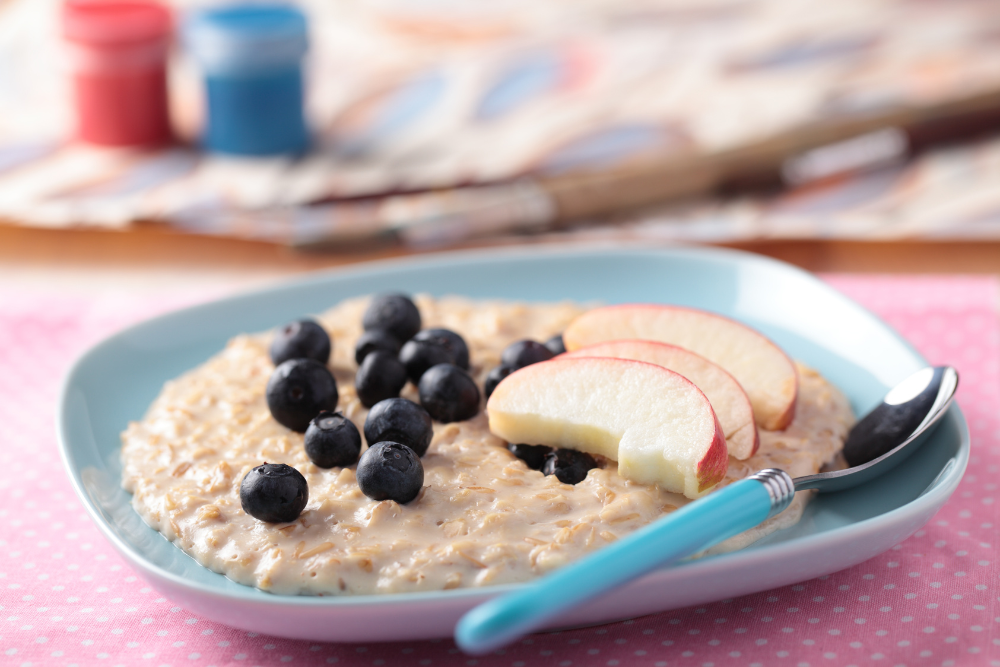WORDS: Jan Marie Macfarlane, Clinical Nutritionist
We’ve all experienced the effects of not eating; fatigue, brain fog and irritability are a few common ones that come to mind.
So why is breakfast so important?
Blood sugar balancing is an incredibly important part of eating breakfast, our blood sugar levels contribute to the uncomfortable feelings mentioned above, as well as a host of others.
Our blood sugars are at their lowest first thing in the morning (after fasting through the night). And what we do in the first few hours after waking to help stabilise them is crucial.
How do we keep blood sugars balanced?
- Eat a balanced breakfast, preferably within an hour of waking.
- Balance each meal and snack with protein, good fats and fibre. This helps balance the blood sugar impact, giving a longer running and smoother energy release.
- Eat regular balanced meals and snacks 3-4 hrs apart throughout the day.
- Minimise processed foods, and high carbohydrate meals ie. Processed cereals, bakery goods.
How can breakfast affect children while at school?
Countless studies show that when children have eaten a balanced breakfast, snacks and foods throughout the day, they not only have better concentration and learning outcomes, they also have improved social interactions, increased energy, better emotional regulation, and physical performance. Overall, breakfast provides an essential platform for a child to feel well in mind and body, they deserve this start to the day!
Benefits of a balanced breakfast
- Provides essential nutrients. Each day our body requires a broad range of essential nutrients, all essential for growth, brain development, immunity, and overall good health.
- Increases attention span and learning ability, improving engagement in school activities.
- Positively affects on-task behaviour in classrooms.
- Improves social interactions and relationships.
- Increased energy to meet physical demands throughout the day.
- Increased mental wellbeing.
- Educating healthy eating practices in childhood help carry through to adulthood practices
So, what should our kids be eating for breakfast?
A balanced breakfast really can be both quick and simple to prepare. In the busy morning rush it’s easy to skip breakfast or opt for an option that may be lacking in nutrients or a non-sustainable energy source. Here are some tips for making your breakfast count!
- Aim to fit in as many nutrients as possible with any meal. If you can add in a piece of fruit or vegetable, do it! For example, if you’re making a chocolate smoothie, sneak in a handful of baby spinach or avocado – it’s surprisingly easy to hide!
- Fibre, good essential fatty acids, and an added source of protein can all help ensure a longer lasting, balanced energy to help sustain kids throughout the morning.
Try these breakfast ideas:
- Easy egg-only omelettes or boiled eggs with a piece of fruit.
- Smoothies with berries, or cacao as healthy chocolate milkshake alternative.
- Pancakes: substituting flour for oats and adding banana instead of sugar gives you a balanced, quick and yummy breakfast.

Berry good breakfast smoothie
With the right blend of ingredients, a smoothie can be a nutritional powerhouse—full of antioxidants, minerals, vitamins, and protein.
P r e p : 5 m i n s | s e r v e s : 1
Ingredients
1/2 cup of blueberries, strawberries, fresh or frozen
1/2 frozen (peeled) or fresh banana
1/4 avocado
1 cup of coconut water, filtered water, almond milk or milk of choice
1 serve of natural pea/rice protein powder. Raw Amazonia, Bondi Protein or Keep it Cleaner plant protein
Method
Blend all the ingredients together until combined, enjoy!
Dos and don’ts of a good breakfast smoothie
DON’T:
- Add fruit juice. The liquid component of a smoothie is important as it’s what helps blend the ingredients. Fruit juice is a popular choice, but it can load your smoothie with sugar.
- Reach straight for kale. Yes, we want to consider adding greens to our smoothie, but if you start with a very bitter green like Kale, you may be tempted to add too much sugar.
- Add sugar to your smoothies. Avoid adding sugar to your smoothie, whether it comes from canned fruit or flavoured yogurt. Sugar won’t satiate hunger, and you’re likely to crash later in the day.
DO:
- Use Greek yogurt or coconut milk. Plain low-fat Greek yogurt and light coconut milk are optimal choices for creating healthy, creamy smoothies. Greek yogurt provides a boost of protein, while light coconut milk adds a hit of rich flavor and creamy texture.
- Start with spinach. Masking the flavour of spinach is simpler, and once you’ve acquired a taste for greens, you might like to branch out to kale or parsley.
- Sweeten smoothies naturally. Fresh or frozen fruits should naturally sweeten your smoothie, but if you need an extra dose, try adding dates.
For more nutrition tips:
janmarie.com.au
@nutritionwithjanmarie
Follow KIDDO on Instagram and Facebook, and subscribe to our weekly newsletter






